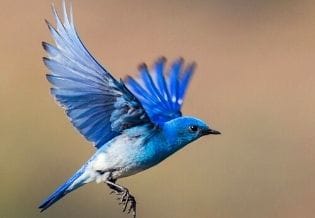Author Contributions
Copyright © 2018 Lucilene Ines Jacoboski
 This is an open-access article distributed under the terms of the Creative Commons Attribution License, which permits unrestricted use, distribution, and reproduction in any medium, provided the original author and source are credited.
This is an open-access article distributed under the terms of the Creative Commons Attribution License, which permits unrestricted use, distribution, and reproduction in any medium, provided the original author and source are credited.
Competing interests
The authors have declared that no competing interests exist.
Citation:
Introduction
Birds represent one of the most well-known and studied groups in the world, but the demand for new knowledge and approaches is increasing. The need for deepening is evident. Studies involving the evolutionary history of communities and species shed more and more light on the organization of communities and processes. The increasing increase in conversion of native habitats and their effects on birds increases around the world, often with detrimental effects on communities 2, 4. However, some studies have shown that conversion of native habitats is not necessarily detrimental to avifauna 1, 5. So, I emphasize the importance of not only taxonomic studies, but studies that involve the question evolution of species and also aspects related to species traits (i.e. functional diversity) and their relation with the conversion of native habitats. We know that each species is unique and the greater the amount of information about species, whether evolutionary or morpho-ecological traits, we will have increasingly refined answers and we will be able to understand how and why species respond in one way or another to the conversion of habitats.
Thus, I emphasize the importance of local studies, as well as global studies within this worrisome theme that is the conversion of habitats and conservation of the biodiversity of birds in the world. Studies of communities based on evolutionary and functional diversity may be important tools for conservation because they allow the identification of species with unique traits and may be important to understand the effect of changes in ecosystem functioning in converted areas 3, 6. I hope in this regard that the publication of JIO contributes to the growth of ornithological science in the world and meets the need to spread knowledge about different topics within ornithology. In addition, we hope the journal will be a form of encouraging scientific research and a link between academia and public agencies linked to research and conservation, encouraging a critical and creative view on the challenges within ornithology and bird conservation. Finally, we hope that the consistency of the set of published articles contributes to the expansion of their knowledge and their professional improvement. That is why we are pleasure to deliver the first edition of the Journal and invite you to submit your papers. Long life wishes to JIO!
References
- 1.G De Coster, Banks-Leite C, Metzger J P. (2015) Atlantic forest bird communities provide different but not fewer functions after habitat loss.Proc. R Soc.Lond.Biol.282:. 20142844.
- 2.Frishkoff L O. (2014) Loss of avian phylogenetic diversity in Neotropical agricultural systems.Science345:. 1343-1346.
- 3.Petchey O L, Gaston K J. (2006) Functional diversity: back to basics and looking forward.Ecol. Letters9: 741-758.
- 4.Phifer C C. (2016) Bird community responses to afforested eucalyptus plantations. in the Argentine pampas.Biodivers.Conserv.25: 1-29.

